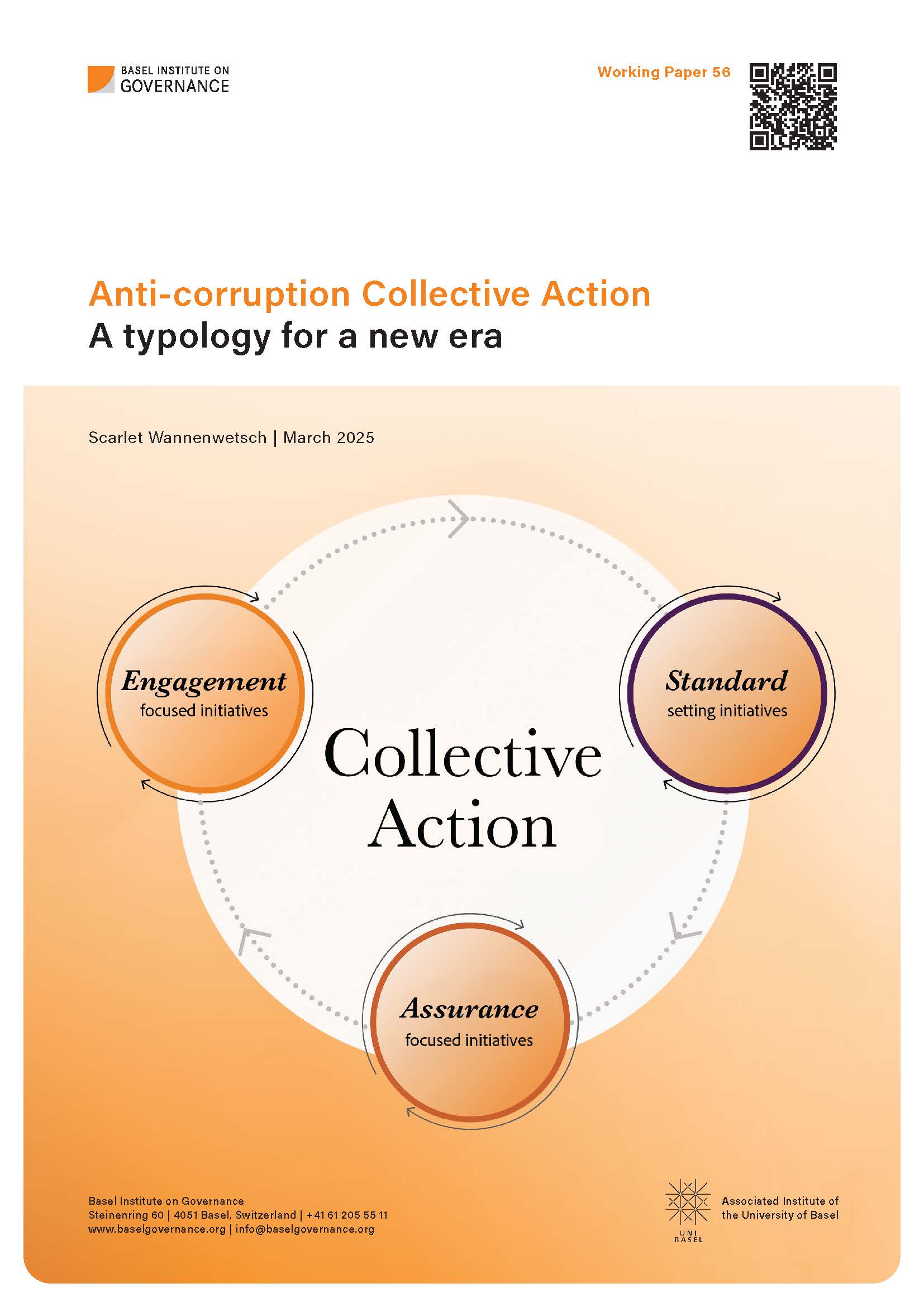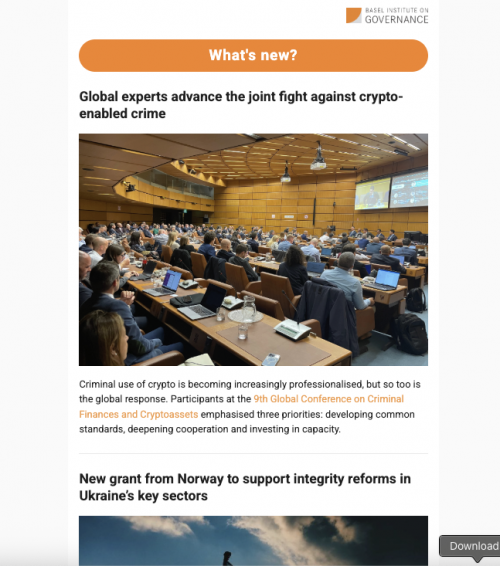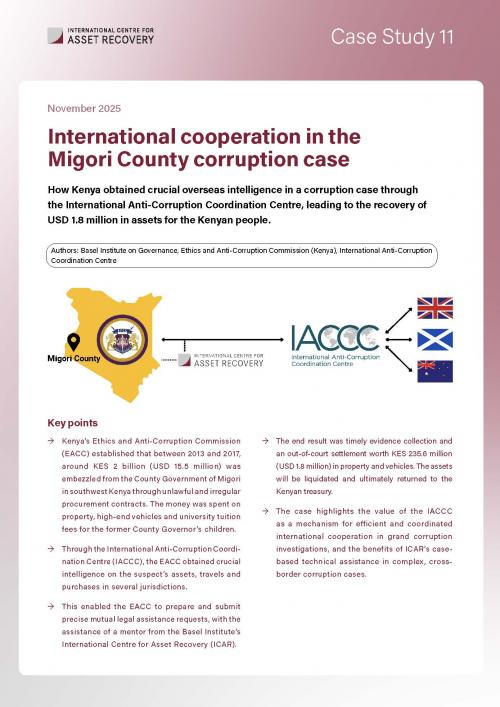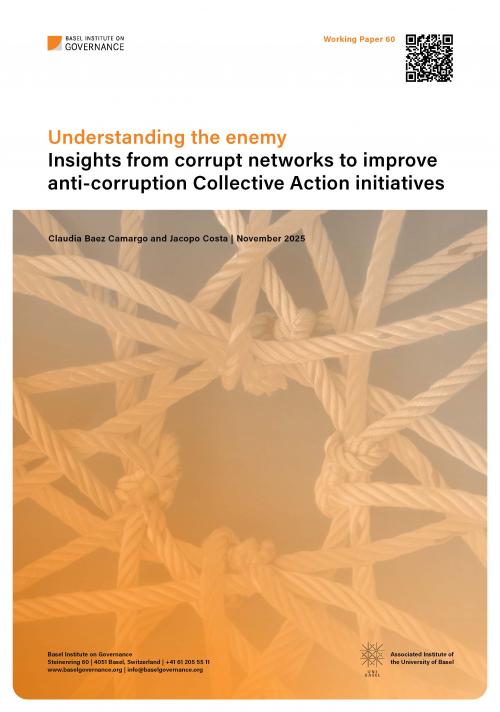Working Paper 56: Anti-corruption Collective Action: A typology for a new era
Since its first use by the World Bank in 2008, the concept of "anti-corruption Collective Action" has evolved into a well-established best practice to prevent corruption and strengthen business integrity.
This paper captures the specific characteristics of anti-corruption Collective Action that have emerged over time and translates them into an easy-to-grasp typology that reflects both the variety and unifying principles that make up the Collective Action ecosystem. It aims to:
- spark new impetus for engagement;
- open the concept to new stakeholders, topics and environments; and
- support existing initiatives in developing their long-term visions and aims.
In addition to supporting practitioners, updating the typology will also help strengthen the case for Collective Action as a normative corruption prevention practice.
About this report
The paper is published as part of the Basel Institute on Governance Working Paper series, ISSN: 2624-9650. You may share or republish it under a Creative Commons BY-NC-ND 4.0 International Licence.
The contents are the sole responsibility of the author and do not necessarily reflect the official position of the Basel Institute on Governance, its donors and partners, or the University of Basel.
Suggested citation: Wannenwetsch, Scarlet. 2025. ‘Anti-corruption Collective Action: A typology for a new era.’ Working Paper 56, Basel Institute on Governance. Available at: baselgovernance.org/publications/wp-56.
Links and other languages




